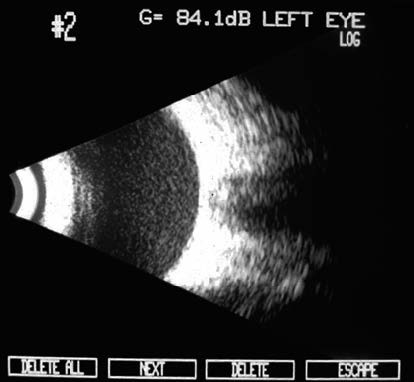Clinical Manifestations
Symptoms
Symptoms may include blurred vision, ocular pain, photophobia, and floaters. Bacterial endophthalmitis following surgery typically occurs within 1–7 days postoperatively, presenting with sudden ocular pain and vision loss. Fungal infections are more likely to occur around three weeks after surgery. Acute postoperative endophthalmitis occurring 30 days after surgery is often associated with wound infections, such as suture-related infections or leaking filtering blebs. Chronic endophthalmitis, which develops months or even a year after surgery, is commonly observed in patients after intraocular lens implantation and generally presents with milder symptoms than acute cases.
Ocular Examination
Endogenous infections often begin in the posterior segment and may coexist with inflammatory retinal diseases. Choroidal white nodules or plaques with well-defined margins are frequently observed, which may extend to the preretinal space and result in vitreous opacities. Hypopyon may also be present.

Figure 1 B-scan ultrasound image of endophthalmitis
The image demonstrates dense punctate opacities within the vitreous cavity.
Postoperative bacterial infections are usually characterized by eyelid swelling, mixed conjunctival hyperemia, purulent discharge from the wound, iris hyperemia, hypopyon, or purulent material in the vitreous cavity. Vision loss progresses rapidly without treatment.
Postoperative fungal infections commonly involve the anterior vitreous where purulent material or membranous structures on the anterior vitreous surface may be observed. If treatment is delayed, the infection may spread to the posterior vitreous cavity and anterior chamber.
Treatment
Antibiotics or Antifungal Agents
Broad-spectrum antibiotics are used initially to control the infection, followed by targeted therapy based on bacterial culture and drug susceptibility test results. Medication delivery routes include:
- Intravitreal injection,
- Subconjunctival injection,
- Topical eye drops,
- Intravenous administration.
Vitrectomy
Vitrectomy can help remove abscesses and pathogens from the vitreous cavity, restoring clarity quickly. It is widely used in the treatment of endophthalmitis. At the beginning of the surgery, a sample of vitreous fluid may be collected for staining and microbial culture. Staining techniques such as Gram staining, Giemsa staining, and fungal staining facilitate pathogen identification.